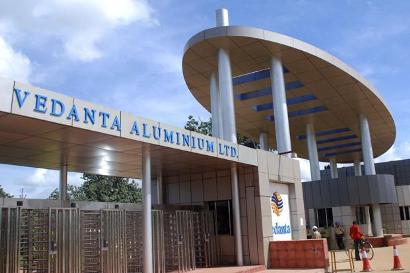New Delhi: Vedanta welcomes the national aluminium vision document,launched by union coal & mines minister G. Kishan Reddy.
It is a pivotal step in charting the aluminium sector’s future and outlines a growth roadmap to transform India into a global aluminium hub. The strategic pillars outlined in the document, such as becoming Aatmanirbhar in aluminium production, achieving self-sufficiency in raw materials, transitioning to low-carbon operations, and enhancing value-added exports–together offer a roadmap to not just meet domestic demand but also claim a 10% share of the global aluminium market by 2047.
Acknowledging the strategic and national importance of aluminium, the document highlights how developed economies across the globe consider aluminium as a critical and strategic metal, which will play an indispensable role in renewable energy, electric mobility, green infrastructure, defence, and emerging technologies.
Aluminium will be critical in driving the nation’s journey towards becoming the third largest economy and a developed nation by 2047. Aluminium demand in India will rise six fold by 2047 and to meet this demand, India must ramp up production from the current 4.5 million tonnes per annum (MTPA) to nearly 37 MTPA over the next two decades, which will need an additional investment of over Rs.20 lakh crore.
Commenting on the vision document, Mr. Rajiv Kumar, CEO, Vedanta Aluminium said, “The aluminium industry today is not merely a supplier of metal, it is a key enabler of India’s journey towards a $30 trillion economy, net-zero targets, and manufacturing competitiveness.The vision document reaffirms that aluminium is the metal of the future, vital for India’s energy independence, net-zero ambitions, and global competitiveness. To make this vision a reality requires support in the form of swift, decisive policy reforms. The moment to act is now. If we can unlock our resource potential and foster value-added manufacturing, India can emerge not just as a leader in aluminium but as a beacon of sustainable industrial growth.”
The vision document highlights that while India is the world’s 2nd largest producer of aluminium, it accounts for just 6% of global production.This points to the massive untapped potential that the aluminium sector holds. When effectively leveraged, it will lead tohuge socio-economic gains, while connecting the remotest part of the country to the mainstream.For every direct employment, Aluminium industry has the capacity to generate indirect employment of 3.7 times.The vision document underscores that India’s aluminium demand is on an exponential growth trajectory and meeting this demand will require significant investment, timely execution, and policy reforms. To meet future demand and reduce import dependency, it is imperative to increase bauxite production to 50 MTPA by 2030 and 150 MTPAby 2047, promote circularity through structured scrap collection and recycling, increase consumption intensity, and enhancefocus on quality in the entire production value chain.The sector is poised to grow with the adoption of Industry 4.0, leveraging digitalisation, AI, and automation.As India stands poised to redefine its aluminium future, Vedanta reiterates its commitment to working closely with the Government in making the aluminium sector a flagship for sustainable growth, global competitiveness, and national resilience.






